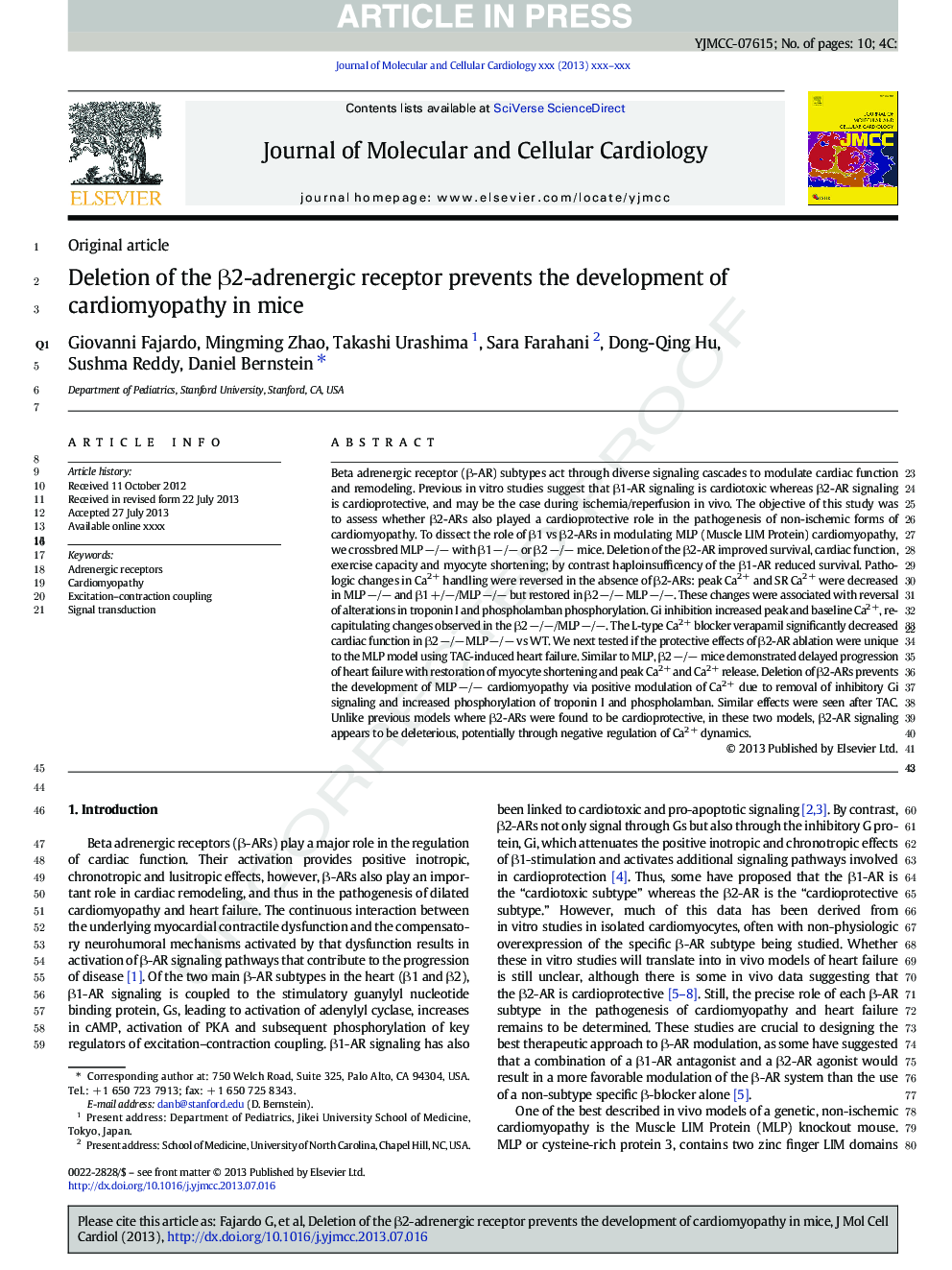| Article ID | Journal | Published Year | Pages | File Type |
|---|---|---|---|---|
| 8475061 | Journal of Molecular and Cellular Cardiology | 2013 | 10 Pages |
Abstract
Beta adrenergic receptor (β-AR) subtypes act through diverse signaling cascades to modulate cardiac function and remodeling. Previous in vitro studies suggest that β1-AR signaling is cardiotoxic whereas β2-AR signaling is cardioprotective, and may be the case during ischemia/reperfusion in vivo. The objective of this study was to assess whether β2-ARs also play a cardioprotective role in the pathogenesis of non-ischemic forms of cardiomyopathy. To dissect the role of β1 vs β2-ARs in modulating MLP (Muscle LIM Protein) cardiomyopathy, we crossbred MLP â/â with β1 â/â or β2 â/â mice. Deletion of the β2-AR improved survival, cardiac function, exercise capacity and myocyte shortening; by contrast haploinsufficency of the β1-AR reduced survival. Pathologic changes in Ca2 + handling were reversed in the absence of β2-ARs: peak Ca2 + and SR Ca2 + were decreased in MLP â/â and β1 +/â/MLP â/â but restored in β2 â/â MLP â/â. These changes were associated with reversal of alterations in troponin I and phospholamban phosphorylation. Gi inhibition increased peak and baseline Ca2 +, recapitulating changes observed in the β2 â/â/MLP â/â. The L-type Ca2 + blocker verapamil significantly decreased cardiac function in β2 â/â MLP â/â vs WT. We next tested if the protective effects of β2-AR ablation were unique to the MLP model using TAC-induced heart failure. Similar to MLP, β2 â/â mice demonstrated delayed progression of heart failure with restoration of myocyte shortening and peak Ca2 + and Ca2 + release. Deletion of β2-ARs prevents the development of MLP â/â cardiomyopathy via positive modulation of Ca2 + due to removal of inhibitory Gi signaling and increased phosphorylation of troponin I and phospholamban. Similar effects were seen after TAC. Unlike previous models where β2-ARs were found to be cardioprotective, in these two models, β2-AR signaling appears to be deleterious, potentially through negative regulation of Ca2 + dynamics.
Related Topics
Life Sciences
Biochemistry, Genetics and Molecular Biology
Cell Biology
Authors
Giovanni Fajardo, Mingming Zhao, Takashi Urashima, Sara Farahani, Dong-Qing Hu, Sushma Reddy, Daniel Bernstein,
